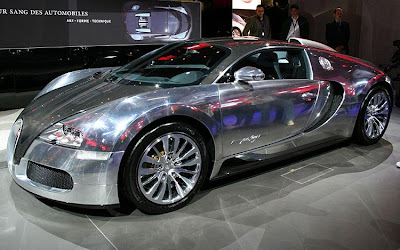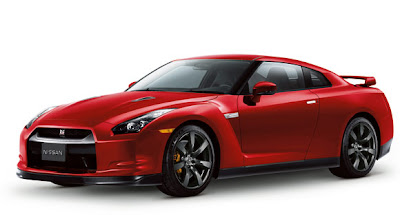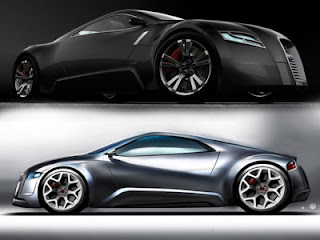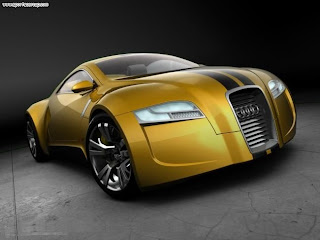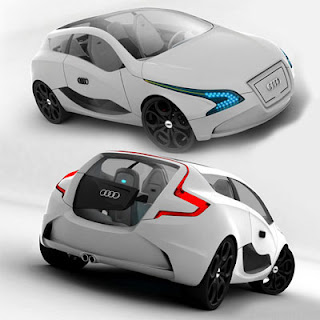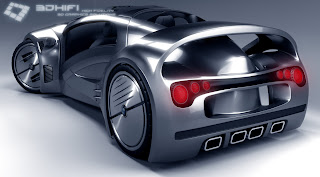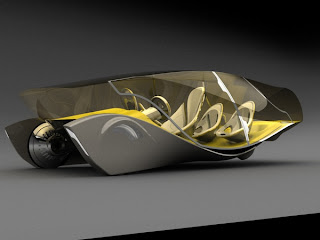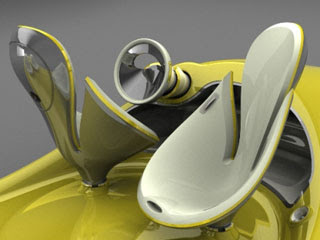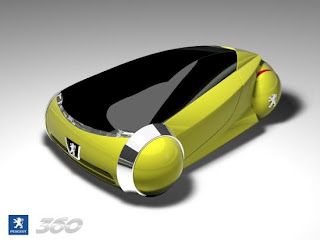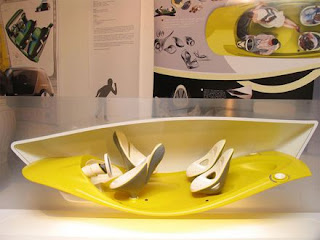
Being an automotive journalist is like being a male porn star. We're little more than Piloti-shoed buffers between the reader and the objects of their lust, and really, no one cares about us. Still, you only get one chance to make an initial impression, so my first review here on Autoblog had to be big. As luck/fate would have it, I got a phone call a few weeks back that went a little something like this: "How'd you like to drive the first
2010 Nissan GTR on the West Coast, before the buff books get it?" Needless to say, the answer was obvious. But what to do with the brand-new R35, one of the most heavily and relentlessly covered car-stories of the past year? This takes us right back to that porno metaphor: How do I give the people what they want?

We hatched a plan – take the uber-
Nissan down to San Diego and pay a visit to Comic Con! A story about 400-pound guys in Batman suits drooling all over the new GT-R practically writes itself, so we contacted various video game companies to see if they would let us drive the GT-R right onto the convention center floor. Perfect! Our stunt would be like lowering a nude, greased-up Megan Fox into a frat house. What could possibly go wrong? Without getting into the epic fail of that last bit, it didn't happen. What you're left with then is yet another review of a
Nissan GTR 2010 Modification where some "pounding at 11/10s" wannabe hamfists Godzilla through envy-inducing, tight, twisty Southern California canyons. Lucky you... err, me.
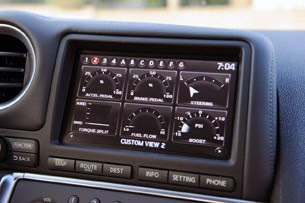
My task then would be to answer the following: There's endless talk about whether or not the
Nissan GT-R 2010 modif has a soul. Yes, we all know it's supercar quick and hypercar capable. And yes, Japan's most recent foray into the segment can utterly dominate and humiliate most British, Italian and German machines – all costing two, three or five times as much – and give like-minded American all-stars a run for their ACR/ZR1 money. But is the GT-R anything more than a numb supercomputer, mindlessly parsing bits of data and then spitting out traction and velocity? Are its capabilities a credit to Nissan's mechanical engineers, or its electrical wonks? To put it another, more Comic-Conny way, is there a ghost in Nissan's machine?

The big news is bye-bye launch control.
First and foremost, we should cover what's new for 2010. The big news is bye-bye launch control. We found the GT-R's penchant for grenading transmissions humorous (from a distance), but alas, farewell. However... maybe it's still there? Maybe Nissan was only telling people launch control had been deleted? We found a very deserted stretch of road, put the transmission and suspension into R mode, turned the VDC all the way off, planted our left foot on the brake pedal and pushed the throttle with our right. Instead of the tach zinging up to 4,500 rpm, fuel cutoff happens right around 2,000 rpm. Launch control is deader than last Thanksgiving's turkey. That's not very soulful.

That said, the Transmission Control Module (TCM) has been reprogrammed. Not only can the six-speed dual-clutch gearbox shift faster (when in R), but the chances of a customer having to shell out $20,000 for a new cogswapper is greatly reduced. The 2010 GT-R also sports five more horsepower, bringing the total to 485, while torque output remains unchanged at 434 lb-ft. Rumors still persist that since each GT-R engine is hand-built, power levels vary and some engines churn out as much as 520 hp, if not more. Let's chalk this up to some engines running 100 octane and others dealing with California's crapola 91 high-test. Bottom line, the power feels freakishly adequate.
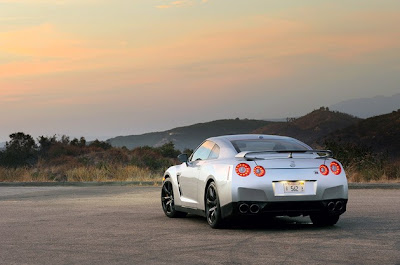
The suspension's been retuned and the Bilsteins are a new design, while the brakes (somehow) have been revamped and fitted with more rigid lines and fresh pads. Our Premium GT-R tester arrived with dark, "near-black" wheels and when coated in Super Silver (like this car) you get a polished front bumper (there's also a new hue called Pearl White). More power, faster shifts, better handling, stouter brakes, blacker wheels and a transmission that's much less likely to eat itself? That sounds fantastic. Soulful, even.
You cannot fit your hand between the front and rear thrones.
As far as looks go, let's face it: You've been staring at the GT-R through your computer screen for as long as I have. Not a single body panel was changed for 2010, so you either love it, or you're indifferent. I will say this, Godzilla is huge. I knew the Nissan was a big boy, but it's nearly ten inches longer than a C6 Corvette; its wheelbase is fifteen inches longer than a Porsche 997. But hey, we were able to fit a case of wine and a large pizza in the trunk, so I'm sure owners aren't complaining too much about the GT-R's dimensions.
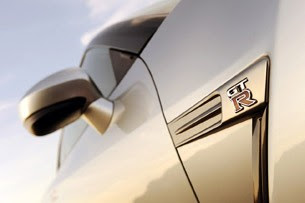
Well, maybe a little about the back seat. No joke: You cannot fit your hand between the front and rear thrones. Even children would be miserable. As far as the front of the cockpit goes, for a Nissan, it's pretty much okay. For an $86,000 vehicle, it's not nearly as nice as you'd like. Sure, there's leather all over the doors and on part of the dash, but it's budget, cheap-feeling leather, not that opulent, veal-fat rubbed and pleated cowhide you'd find in a Spyker. However, all that really matters is the usable stuff. The pedals, steering wheel, flappy-paddles, seats and handbrake are all up to supercar snuff. Especially that burly handbrake.
So then, how's it drive? In a word, Supercalifragilisticexpialidocious. From a standing start, the forward thrust is obscene. Pornographic, to stick with our earlier metaphor. 60 mph happens in less than four seconds (thanks to launch control delete, the GT-R no longer hunts in the 3.2/3.3-second Enzo/ZR1 woods) and the quarter-mile is annihilated in less than twelve. Trap speed? 120 mph, give or take. Top speed? North of 190 mph.
All these numbers are as quick or quicker than a $200,000+, all-wheel drive, paddle-shifted, 552-horsepower Lamborghini Gallardo LP560-4 or a $280,000 502-hp Ferrari F430 Scuderia. But forget about the numbers, the price tags and the competitor's badges. Instead, concentrate on the massive brutality taking place and hair-splitting wail of the turbos at full clip. You get to watch the scenery deform all around you as the buzzing builds to full cresendo. After giving one pal a quick blast up an empty freeway, he didn't want to shake hands because his palms were so sweaty. The GT-R is a face-puller, a neck-snapper, a pulse-pounder. Especially when you're banging off shifts in half a second with one of the world's finest paddle-shifted dual-clutch gearboxes. And that's in default. Pop the transmission into R-mode and the shifts are over and done with in two-tenths of a second. Bloody hell, indeed.
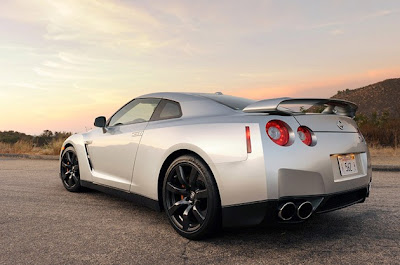
Yeah, yeah, yeah -- 485 hp cars with 434 lb-ft of torque and AWD traction should be blisteringly fast when pointed straight. But the GT-R weighs over 3,800 pounds. Can the near two-ton porkster mechanically handle the twisty stuff? Simply put: Yes. But 'handles' is not even the right word. Dispatch, conquer, dominate, tear asunder, murder – that's it – the GT-R murders corners dead. Starting with the donk-sized tires (255/40 R20 in front, 285/35 R20 out back), moving to the retuned suspension and ending with the innards of a Swiss watch-fancy AWD system, the GT-R has world-class Stickum.
3,829-pound cars shouldn't change direction like Barry Sanders in his prime.
If I may quote McLaren F1 designer Gordon Murray after he climbed out of the Bugatti Veyron for the first time, "One really good thing, and I simply never expected this, is that it does change direction. It hardly feels its weight. Driving it on a circuit I expected a sack of cement, but you can really throw it at tight chicanes." Replace the word "circuit" with "stomach churning canyon road" and those are my sentiments exactly vis-à-vis the 2010 GT-R. 3,829-pound cars shouldn't change direction like Barry Sanders in his prime. Yet this one does.

Did I mention the stoppers? Going by the ancient caveat, "A car's only as good as its brakes," the new GT-R is the third best car in the world. Period. Cymbal-sized 15-inch discs at all four corners and six-piston
Nissan-branded Brembo calipers join forces to mess with the space/time continuum. Slowing the car from 60 mph is near effortless. When you dip deeper into the near-bottomless well of power -- say around 140 mph – the brakes still work flabbergastingly well, hauling you down to something resembling a speed limit in mere moments. At one point in downtown L.A, a school bus cut us off and neither driver nor passenger were the least bit worried. Why? We'd been using the brakes all day – we knew.
Ah, but here it comes. Here's the part of the story where I'm supposed to tell you that yeah, you can hoon a GT-R harder and faster than a Lamborghini or a Ferrari. But the Italians are works of art, a living, breathing symphony filled with arias pointed right at the heart of an automobile where man and machine become one via harmony, divine intervention, etc. The GT-R? Nothing but a Silicon Valley automaton, precisely but passionlessly going about its servile duties while totally disconnected from the world around it and driver within. Well guess what? I'm not saying that – or anything resembling that. In fact, I'm going to say that those who complain about the GT-R's supposed soullessness simply aren't pushing it hard enough. Because once you do, you hear the angels sing. New rule: All observations concerning the GT-R at less than 80 mph or 5,000 rpm (whichever comes first) are meaningless. Under that and Godzilla's not even breathing hard.
When the gloves come off (transmission's in R-mode, suspension's in R-mode, VDC's in R-mode, nitrogen-filled tires are nice and warm and tacky) not only can the new GT-R rundown the aforementioned farm animals, but it's just as rewarding to drive – if not more so. Why? You can brake later, you can hold the road longer and you can blast out of corners quicker. Isn't that why we drive? Like many great cars, the GT-R seems to shrink when pushed, and the harder and meaner, the smaller it gets. Italian exhausts sound a thousand times better, but the GT-R is simply the better supercar. You'll be continually shocked that such a heavy, civilized and inexpensive car is not only capable of, but eager to rotate on its axis, accelerate like a rally car over busted pavement and keep its driver cool/comfortable after hours of use and abuse.
One caveat: during all of our testing we left the VDC on (except for our ill-fated attempt at launch control) and in R-mode for several reasons. The first being that
Nissan strictly forbids operating the car with the VDC defeated unless you're stuck in snow or mud – it straight-up voids the warranty – and we didn't feel like returning a handful of broken half-shafts and shredded gears to the good folks at
Nissan. The second reason being that most of our evaluative drives were on two-lane public roads with the high possibility of oncoming traffic and blind corners.
The GT-R inhabits the same plane of existence as Porsche's legendary 959.
That said, the VDC in R-mode has such incredibly high limits that we were able to register full back-to-back 1g lateral acceleration pulls in two different directions (as indicated by the g-meter oscilloscope) again and again and again. The car almost never lets go. And if it does step out (journo-speak for, "I entered the corner too hot, mashed the brakes while chopping the wheel and staring at a squirrel"), the sensation is akin to a hand reaching down from the clouds, grabbing hold and gently performing a quick course correction – the same way you used to play with your Hot Wheels. There's no sudden loss of power, no cruel nanny coming in like a guillotine. Just a little bit of wiggle, and you're back in the game, pushing the edge of the envelop, gunning for an M6, Ducati Monster, Dodge Viper and a few Ferrari F430 Spiders (yes, we did). Over the course of five days, five tanks of high-grade gasoline and more than 600 miles, we experienced the full force of the VDC saving our butt exactly once. And yeah, it was when we were trying to pull away from the damn Ducati.
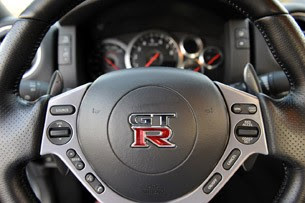
So what's up then? Why the bum rap? Why do so many journalists (and I can't name names because I'm friends with so many of them) write off the GT-R as highly competent but ultimately soulless? Sure, it's one of the four or five most mindboggling performance vehicles on sale, but... meh. They just don't dig it. Besides not driving it hard enough, here's another explanation: Remember when compact discs came out? There was a seemingly endless series of interviews on MTV with guys like Tom Petty bemoaning the loss of the pops, hisses and scratches inherent to records. The flaws were part of the sound, man. You can't flip a CD over – how do you know what side of the record is playing? That's fine, but it's just knee-jerk reactionary nostalgia.
Let's look at the 2005 winner for supercar bang-for-the-buck: the Corvette Z06. It makes about identical power compared to the GT-R, but weighs 700 pounds less. Yet the GT-R is faster, both in a straight line and around corners. Stops better, too. Neat party trick, no? Yes, laying fat, smoky strips of incinerated rubber a hundred feet long is fun, but it's old fashioned, and in many ways, it's making the best of a compromised situation. On the other hand, the GT-R inhabits the same plane of existence as Porsche's legendary 959. Better driving through science. Of course, the
Nissan GTR 2010 Modification is faster, more nimble and worlds less expensive than my favorite Porsche. Now I'm not blind, deaf or numb. A certain number of imperfections do add flavor. But that's hardly the only way to build character. Might I suggest a 485-hp, twin-turbo 3.8-liter V6 coupled to a fancy-pants AWD system and a dual-clutch tranny from hell? For my money, that's about as soulful as a car gets.
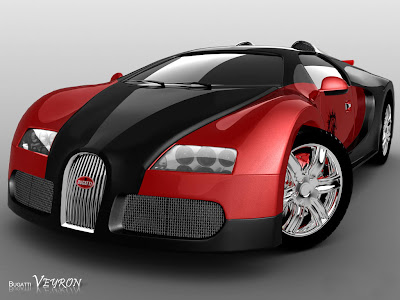 The transmission in the vehicle consists of Direct Shift gearbox with dual clutches, manual gearbox controlled by the computer with the 7 gear ratios, magnesium paddles next to the steering wheel and has the shift time of 150 Ms. The vehicle uses the Haldex traction system and provides the 4-wheel drive. The new Veyron uses the flat tires from the Michelin, which are specially designed for the Veyron to provide the maximum speed. The curb weight of the vehicle will be 2034 kilo grams.
The transmission in the vehicle consists of Direct Shift gearbox with dual clutches, manual gearbox controlled by the computer with the 7 gear ratios, magnesium paddles next to the steering wheel and has the shift time of 150 Ms. The vehicle uses the Haldex traction system and provides the 4-wheel drive. The new Veyron uses the flat tires from the Michelin, which are specially designed for the Veyron to provide the maximum speed. The curb weight of the vehicle will be 2034 kilo grams. The wheel base of the Veyron is about 2710 mm, while the length, width and the height of the model are 4462 mm, 1998 mm and 1204 mm respectively. The Bugatti Veyron modification has 10 radiators in total - 1 hydraulic oil radiator for the spoiler, 3 radiators for the engine cooling system, 1 engine oil radiator, 1 heat exchanger for the air-to-liquid intercoolers, 1 differential oil radiator, 2 for the air conditioning system and 1 transmission oil radiator.
The wheel base of the Veyron is about 2710 mm, while the length, width and the height of the model are 4462 mm, 1998 mm and 1204 mm respectively. The Bugatti Veyron modification has 10 radiators in total - 1 hydraulic oil radiator for the spoiler, 3 radiators for the engine cooling system, 1 engine oil radiator, 1 heat exchanger for the air-to-liquid intercoolers, 1 differential oil radiator, 2 for the air conditioning system and 1 transmission oil radiator.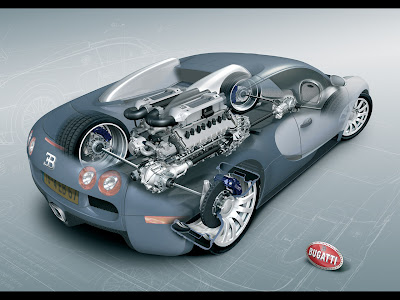 The engine in the vehicle produces 746 kilo watts of power and a massive 920 lb ft of torque. The maximum speed of the vehicle is about 400 kilo meters per hour, and the most fascinating part of the story is that the new Bugatti Veyron is capable of reaching the speed of 200 kilo meters per hour in just 7.3 seconds.
The engine in the vehicle produces 746 kilo watts of power and a massive 920 lb ft of torque. The maximum speed of the vehicle is about 400 kilo meters per hour, and the most fascinating part of the story is that the new Bugatti Veyron is capable of reaching the speed of 200 kilo meters per hour in just 7.3 seconds.
